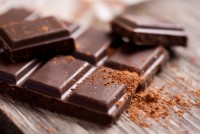A history of chocolate

Almost anyone you meet will have some type of love or affinity with chocolate.
That’s no surprise considering it’s a product with a long and refined history. The chocolate we know and love today is all thanks to not just the discovery of cacao seeds/beans, but also the way its production and ingredients have advanced over the years.
A brief history of chocolate
While the history of chocolate dates all the way back to 1900 BCE, with traces linking back to the Mokaya and pre-Olmec people, it’s the Aztecs whose use of the cacao seeds is more widely known. Because of this, much of chocolate’s extensively documented early history takes place in Mesoamerica.
The Aztecs discovered cacao seeds, seeing them as a gift from Quetzalcoatl, the God of wisdom. Cacao seeds were so valuable that they were actually used as a form of currency by the Aztecs. This currency applied to the areas the Aztecs had conquered in the 1400s, where those who grew cacao were ordered to pay it to the Aztecs as a tax.
Originally, chocolate only existed as a drink. Due to sugar not existing (or, more accurately, having not been discovered/created), spices, wine and/or corn purees were mixed with the cacao instead. The foam in the drink was achieved by pouring the liquified chocolate between vessels until foam began to appear. In the eyes of the Aztecs, chocolate possessed aphrodisiac qualities helped make those who consumed it stronger.
By the 1500s, chocolate expanded outside of Mesoamerica to Europe. While Christopher Columbus encountered the cacao bean in 1502, it was met with a cold reception when he returned to Europe. It wasn’t until Spanish conquistador Hernán Cortés became the first European (most likely) to encounter cacao in its actual chocolate form in 1519.
After the Spanish conquered the Aztecs, chocolate (not just the cacao beans) made its way to Europe. The Spanish added sugar or honey to the chocolate to remove much of the bitterness that existed in the original Mesoamerican beverage. As the popularity of chocolate expanded in the succeeding 100 years, other countries added other changes to the formula (e.g. England is believed to be the first country to substitute water with milk in the formation of the chocolate beverage).
It was in 1828 that Dutch chemist Coenraad Van Houten would play the integral role of redefining chocolate into how it is chiefly consumed today. Back in 1815, he played a similarly important role of reducing the bitterness of chocolate by adding alkaline salts into the formula. But when he created a press in 1828 to help remove half the natural fat found in chocolate liquor, it also became the device that would transform chocolate into its solid form.
What became known as “Dutch cocoa”, the machine-pressed chocolate was instrumental to how solid chocolate came about. In 1847, Joseph Fry figured out how to make chocolate mouldable with one of these machine presses by adding back melted cacao butter. And as with any invention, this process refined over the years. In 1879, for example, the texture and taste of chocolate was further improved when Rodolphe Lindt (of Lindt Chocolate fame) invented the conching machine.
Suffice to say, the chocolate we now know and love is thanks to continued evolved technology and practices throughout history.
